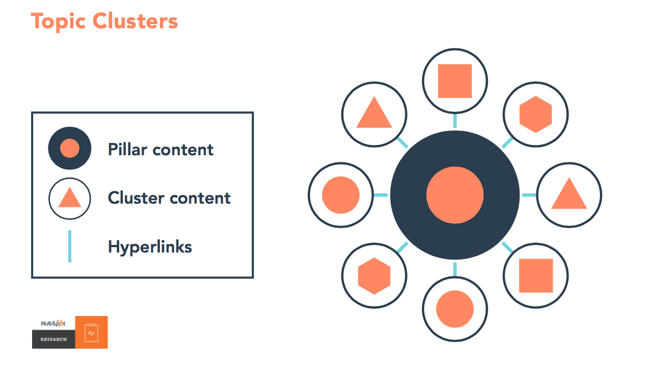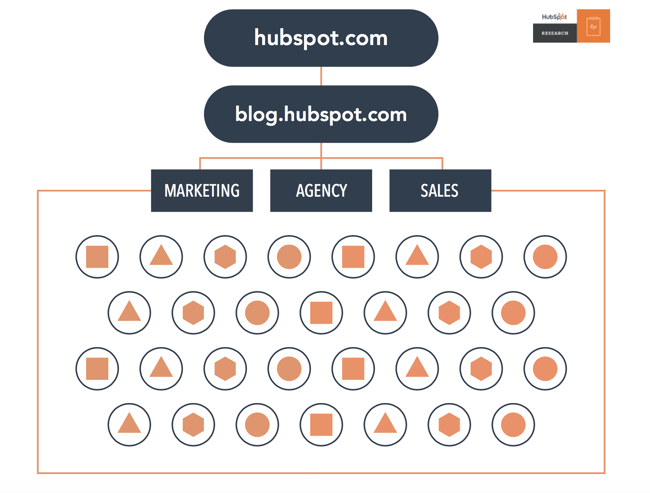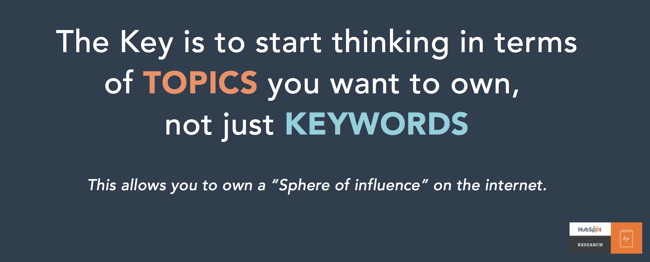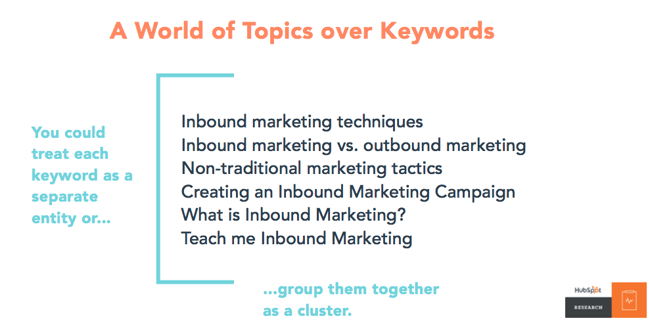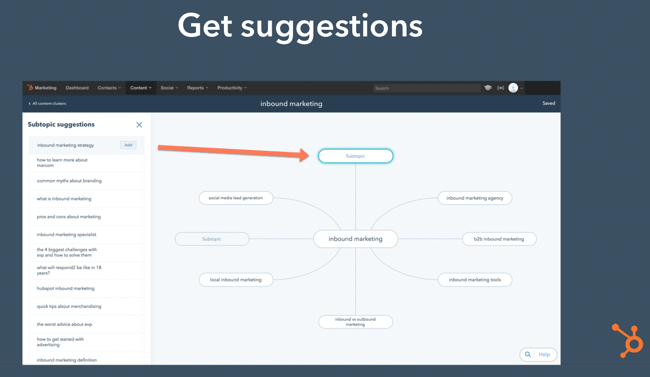Written with contributions from Leslie Ye, Matthew Barby, Anum Hussain, and Cambria Davies
TL;DR: Influential search engines like Google have changed their algorithm to favor topic-based content. As a result, websites are exploring a new way of linking related content under a “topic clusters” model. This report serves as a tactical primer for marketers responsible for SEO strategies.
Table of Contents (8-minute read)
While you cheerfully (or apathetically) browse the web, many companies are quietly reconfiguring their web pages in the background. Why?
Because the competition to rank in search engine results is intense. As a result, content-focused websites have adopted new best practices. SEO is now shifting to a topic cluster model.
In this model, a single “pillar” page acts as the main hub of content for an overarching topic. Multiple content pages that are related to that topic link back to the pillar page. This linking action signals to search engines that the pillar page is an authority on the topic, and over time, the page may rank higher for the topic it covers.
The topic cluster model, at its core, is a way of organizing a site’s content pages using a cleaner and more deliberate site architecture.
Source: Matt Barby
Watch the video below to learn more about the topic cluster methodology:
Search Engines Are Forcing Websites to Adapt
Marketers and SEO experts are not going through the tedious process of overhauling their site structure just to get ahead of consumer behavior. They’re being forced to because search engines have changed their algorithms in response to consumers’ behavioral changes.
Years ago, people posed fragmented keyword queries to search engines to find answers to their questions. Nowadays, people are asking search engines more complex questions, and they expect an accurate and timely answer.
Searchers who want a specific answer also use many different phrases in their queries. Search engines are now smart enough to recognize the connections across these queries. Algorithms have evolved to the point where they can understand the topical context behind the search intent, tie it back to similar searches they have encountered in the past, and deliver web pages that best answer the query.
The first big shake-up related to this change occurred with Google’s Hummingbird update in 2013. The search algorithm began parsing out phrases rather than focusing solely on keywords. Many SEO professionals see Hummingbird as Google’s official switch from a keyword to a topic focus.
The next major step toward reliance on topics was Google’s RankBrain update. Launched in 2015, RankBrain is Google’s machine learning algorithm designed to understand the context of people’s search queries. It associates past searches with similar themes and pulls multiple keywords and phrases that are associated with the search query to find the best results.
Do Topic Clusters Actually Impact SERPs?
In light of these algorithm changes, former HubSpotters Anum Hussain and Cambria Davies launched topic cluster experiments in 2016. The extensive findings from their initial topic cluster experiments showed that the more interlinking they did, the better the placement in search engine results pages (SERPs). Impressions (or views) also increased with the number of links they created. Source: Anum Hussain and Cambria Davies
Source: Anum Hussain and Cambria Davies
What Does This Mean for my Website?
Before the shift to topic clusters, HubSpot’s website structure looked like the image below.
Source: Matt Barby
The master URL hosts the homepage and links to subdomains or subdirectories.
You can see the spread of web pages within HubSpot’s subdomains. As HubSpot produces more content, the blog pages increase and the structure becomes more complex because there’s no uniform linking in place. This setup makes it harder for search engines to crawl through all the pages quickly.
HubSpot, and many similar businesses that invest in content, find themselves with dozens of web pages that cover similar topic areas. All these pages end up competing with each other to get found by search engines, and ultimately, the searcher.
To prevent this, a more orderly, thoughtful arrangement is needed — one that tells search engines what page should be prioritized and displayed for the main topic. All the pages related to that topic can then be organized as one interlinked cluster.
Topic clusters rearrange a website’s structure to look more like the image below. Clusters of content that cover a topic area link to a central pillar page that definitively — yet broadly — outlines the topic.
Source: Matt Barby
How Do I Create a Topic Cluster?
Let’s use the topic of “content marketing” as an example. Audit your existing content pages and group them by topic focus. If needed, create a pillar page on content marketing that captures all the key aspects of the topic in a single page (see the example below).
Example Topic Feature: Content Marketing
- Content Marketing Strategy
- Brainstorming Techniques
- Blogging
- Blogging Mistakes
- Buyer Personas
- Writing Skills
- Writing Productivity
- Buyer’s Journey
- Gated Content
- Growing Readership
- Content Planning
- Content Creation Tools
- Blog Post Topics
- Grammar Fails
- Post Types
- Scaling Content Output
Note that pillar pages need to broadly cover the topic you’re focusing on so that you can link all related content pages to it in a sensible way.
The cluster content you create or optimize should go into depth on just one area mentioned on the pillar page. For example, if you have a pillar page on search engine optimization, a cluster content page would detail how to optimize your site architecture for search engines.
Think of your content assets in terms of topics you want your business to compete in, rather than discrete keywords. The keywords can still play into your overall strategy, but topics are now the umbrella under which your keyword strategy operates.
Leslie Ye, who overhauled a large number of HubSpot’s content pages into clusters, sums up the art of choosing topics for clusters:
“When considering whether something should be called a pillar page or not, ask yourself this: Would this page answer every question the reader who searched X keyword had, AND is it broad enough to be an umbrella for 20-30 posts?
A good sniff test here is — if you’re trying to get the page you’re working on to rank for a long-tail keyword, it’s not a pillar page. If the page you’re working on explores a very narrow topic in great depth, it’s not a pillar page. If the page you’re working on touches on many aspects of a broad topic, it’s probably a pillar page.”
In the example below, if you wanted to own the term “inbound marketing,” you would research related topics or long-tail keywords, create content on those subtopics, and then link back to an inbound marketing pillar page to create your cluster.
Once you have a designated pillar page, update the links in the related content pages you’ve identified to form a “cluster” around the pillar page. Every post in the cluster set needs to be linked to at least once with the same anchor text (the part that is hyperlinked) so that a search engine knows it’s part of a topic cluster.
Over time, monitor the pillar page’s ranking within search engines. When your ranking stabilizes and you’ve grown your authority on the topic, you can take the chain of clusters further by linking out to a related topic.
A natural follow-up cluster to the “content marketing” topic could be the next step in the content marketing process, such as how to create content that converts.
Tactical Tips to Get Started With Topic Clusters
Choosing a topic to create cluster content around and auditing existing content can be downright painful, especially if your company has an extensive archive. Here are a few suggestions to help you organize and create topic clusters.
- Map out five to ten core problems that your buyer persona has. Use surveys, run interviews, and do some secondary research within online communities as needed to gather the data.
- Group each of the problems into broad topic areas.
- Build out each of the core topics with subtopics using keyword research.
- Map out content ideas that align with each of the core topics and corresponding subtopics.
- Validate each idea with industry and competitive research.
- Create content, measure the impact, and refine.
To keep track of content and links within a topic cluster, your team can set up a sheet like the one below. Depending on the complexity of the topic and the number of pages you’re linking to, some of the categories may not be necessary.
![]()
The categories to track include the following.
- Page URL
- Cluster topic
- Subcluster (if applicable)
- Keyword to rank for
- Is it linked to the pillar page? (Y/N)
- Is it relinked (if applicable)? (Y/N)
- Any other actions needed
- Has the other action been taken yet? (Y/N)
- Links out to pages 1, 2, 3, and/or 4
- Is it also a sub-pillar page (if applicable)? (Y/N)
Help is On The Way
Many companies are also developing tools to help marketing teams organize content around topics. Point solutions on the market, such as MarketMuse, identify content gaps and can help you organize and optimize content by topic cluster.
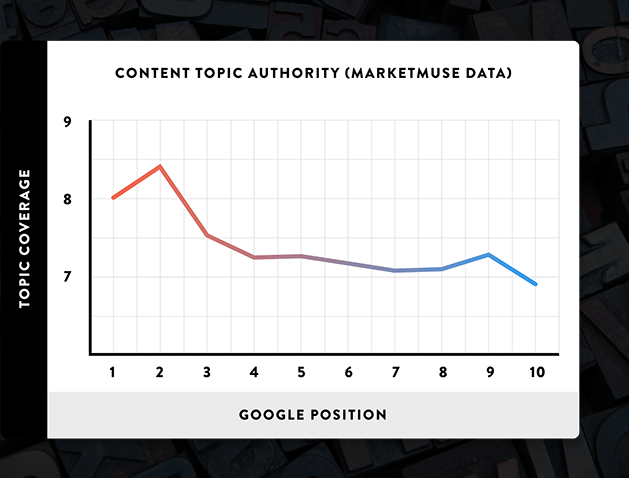
HubSpot also has a content strategy tool that helps you create, execute, and measure content in topics.
Machine learning helps marketers identify the cluster topics (or long-tail keywords) that their target personas typically search for and offers subtopic suggestions. Soon, there will be more tools to help SEO specialists and marketers create topic clusters to maximize their content strategies.
This report contains links for HubSpot Content, Products, and Services.
Editor’s Note: This post was originally published in 2017 but was updated in 2022 for comprehensiveness.
![]()


